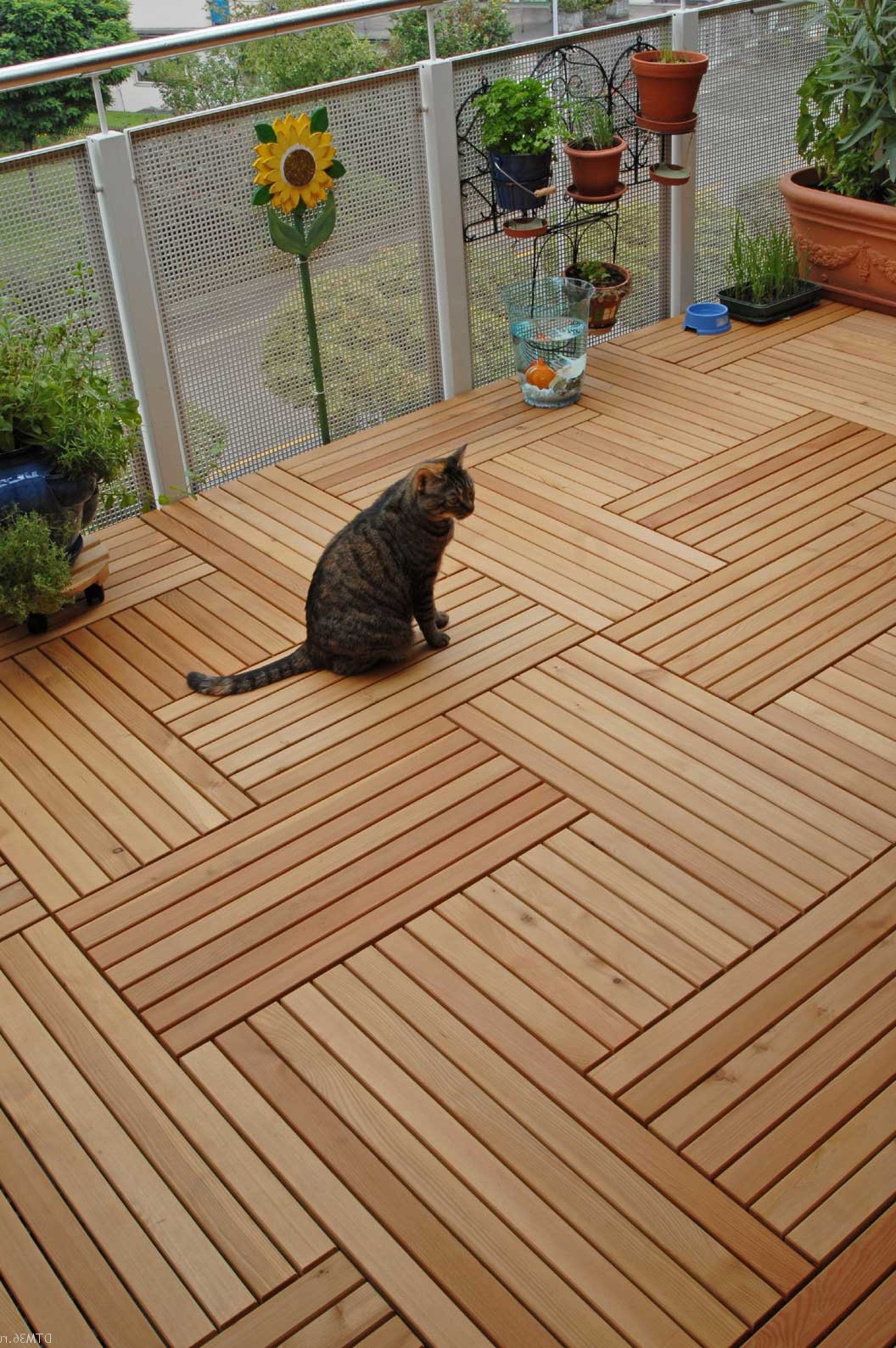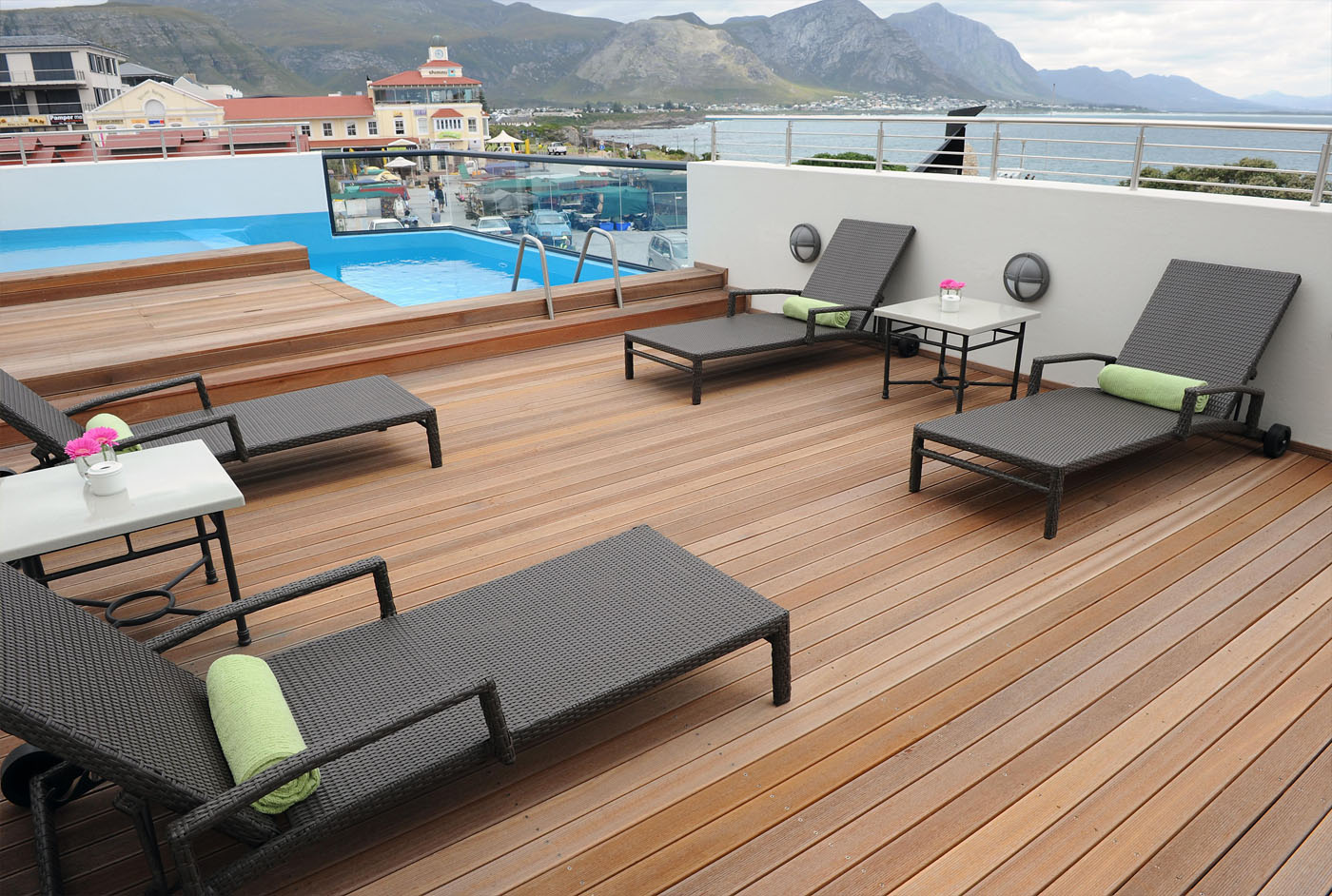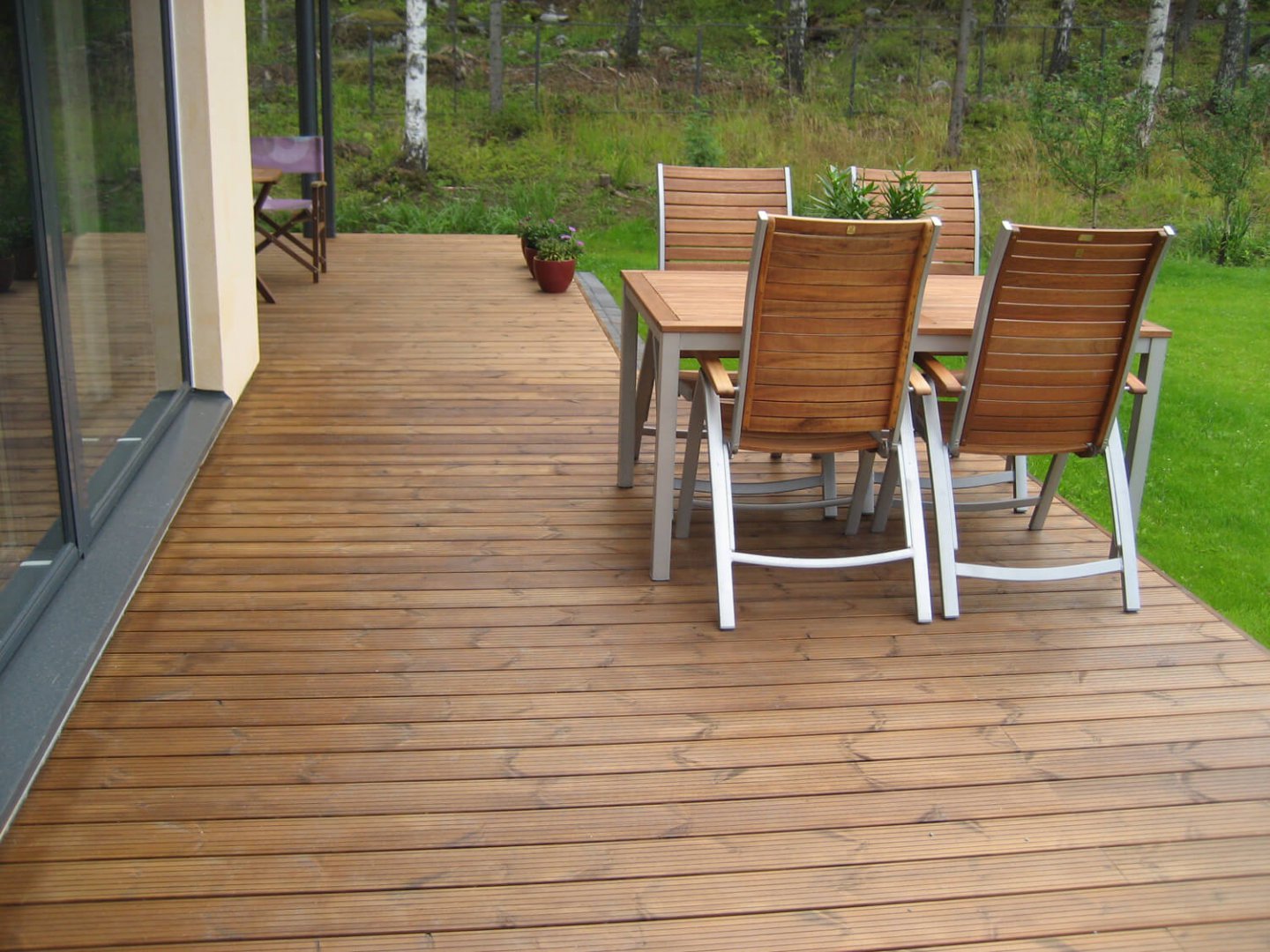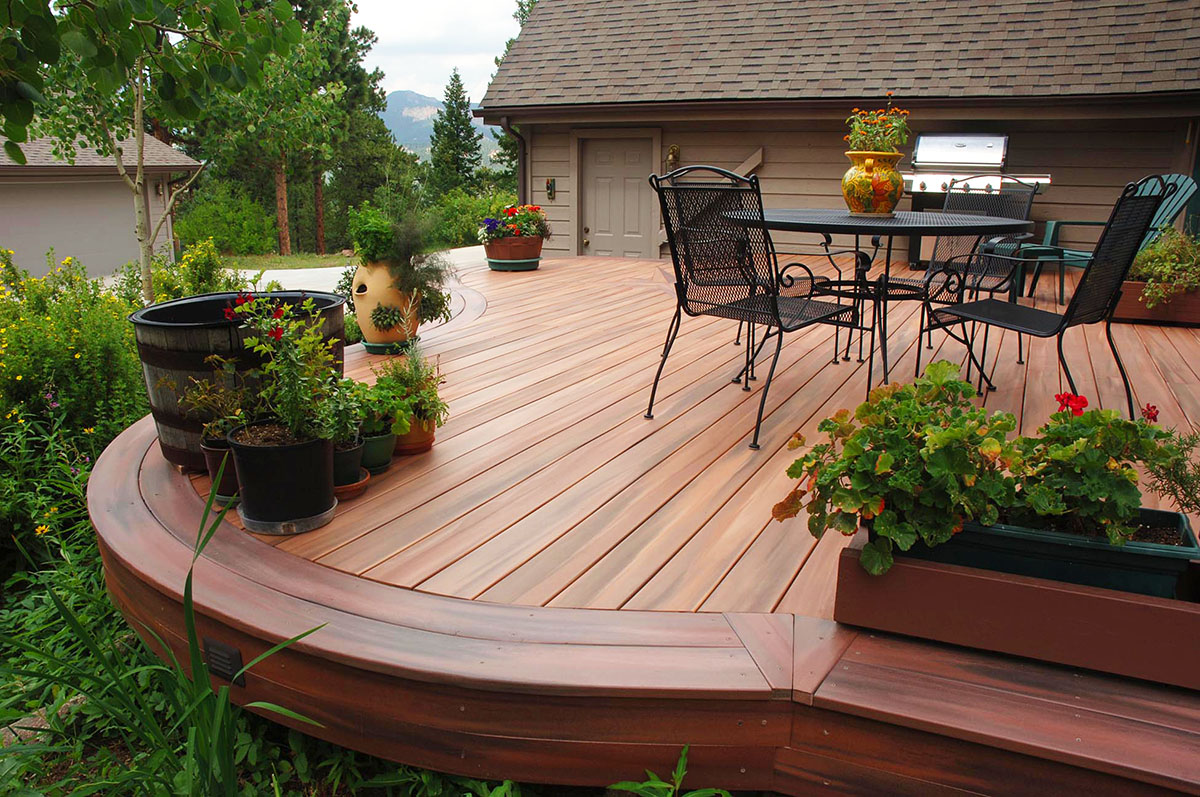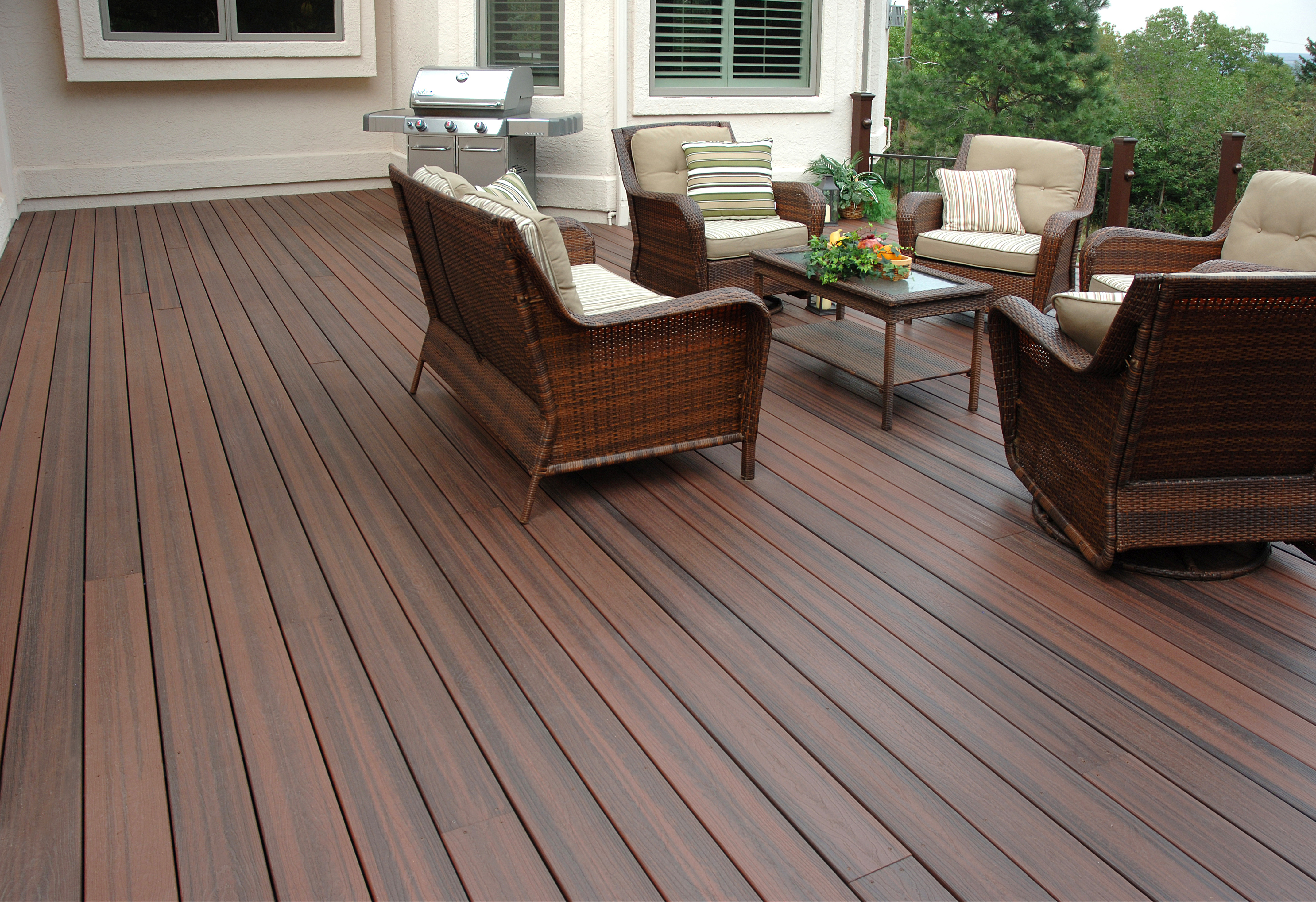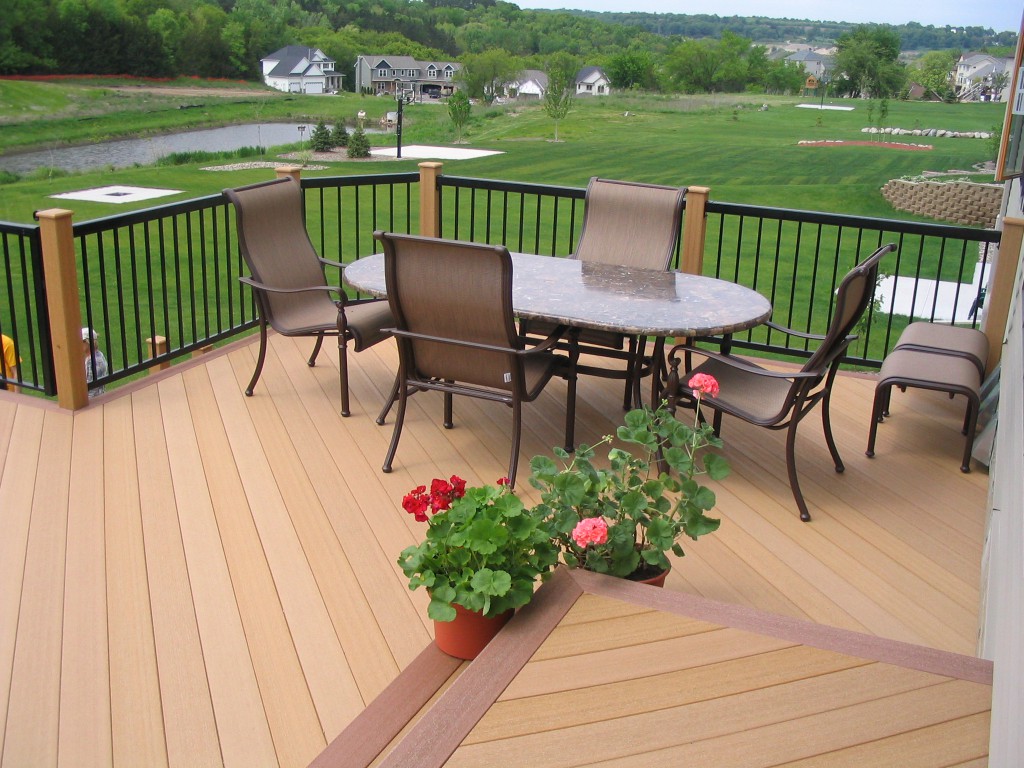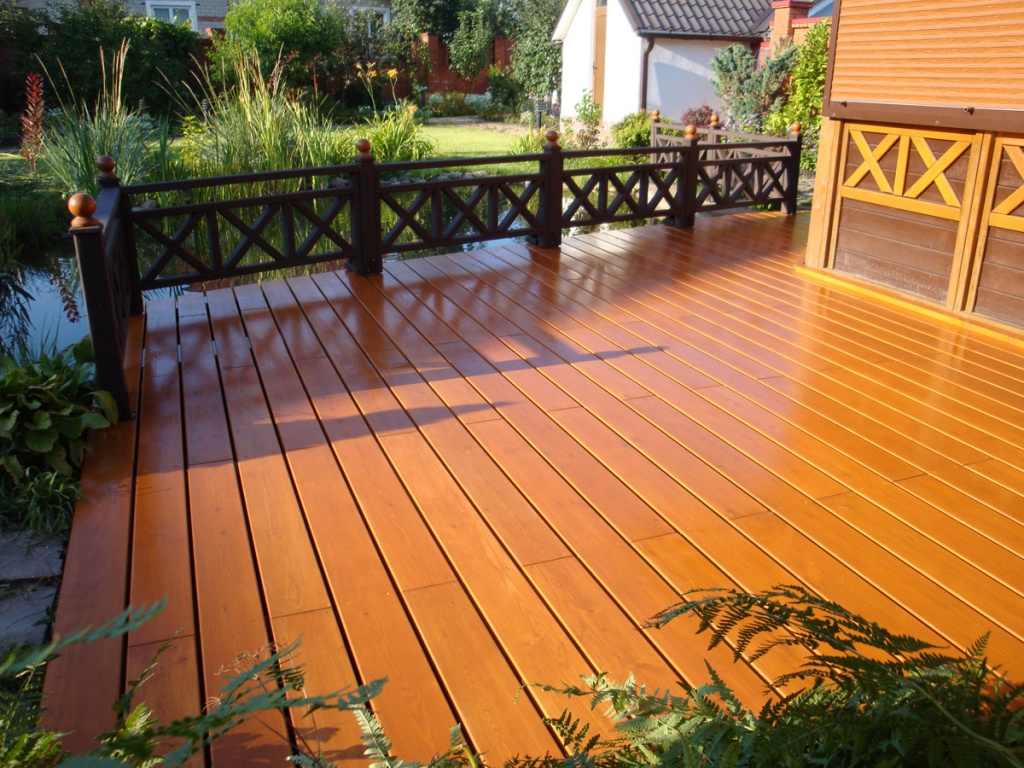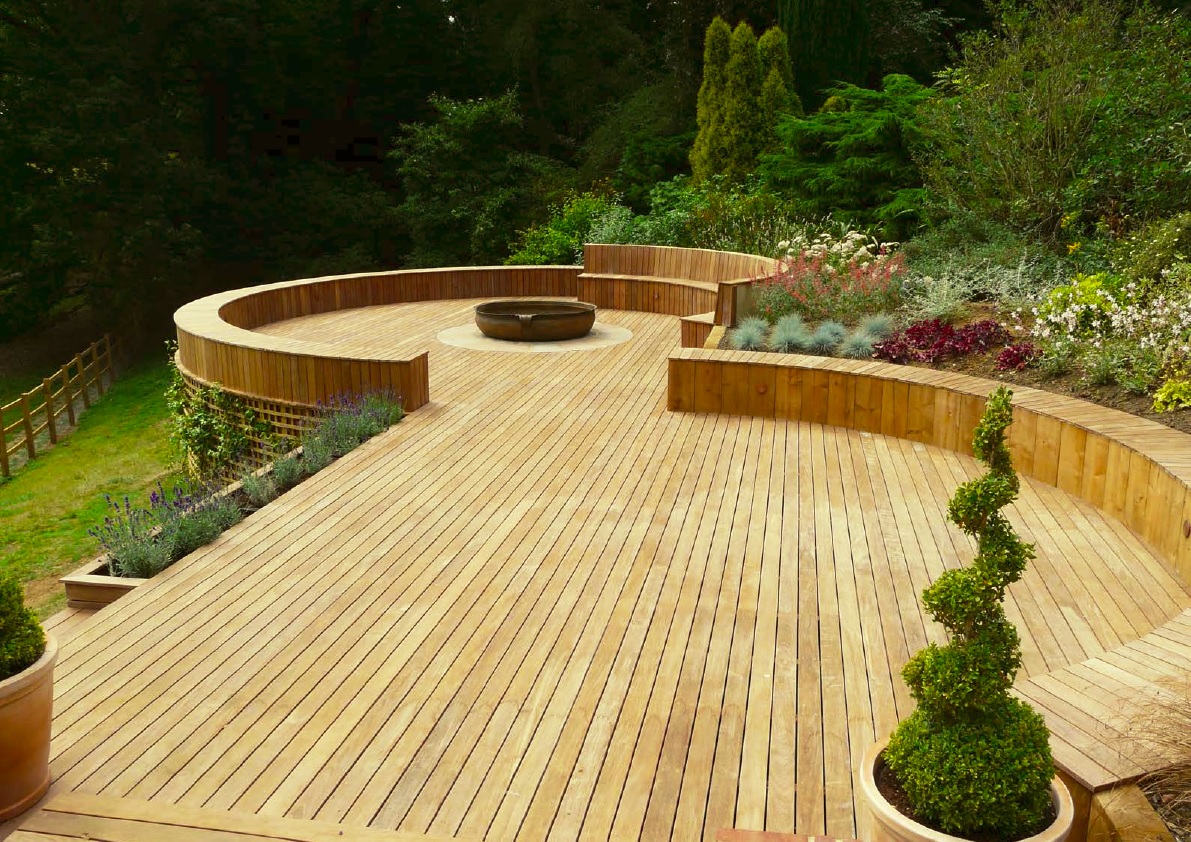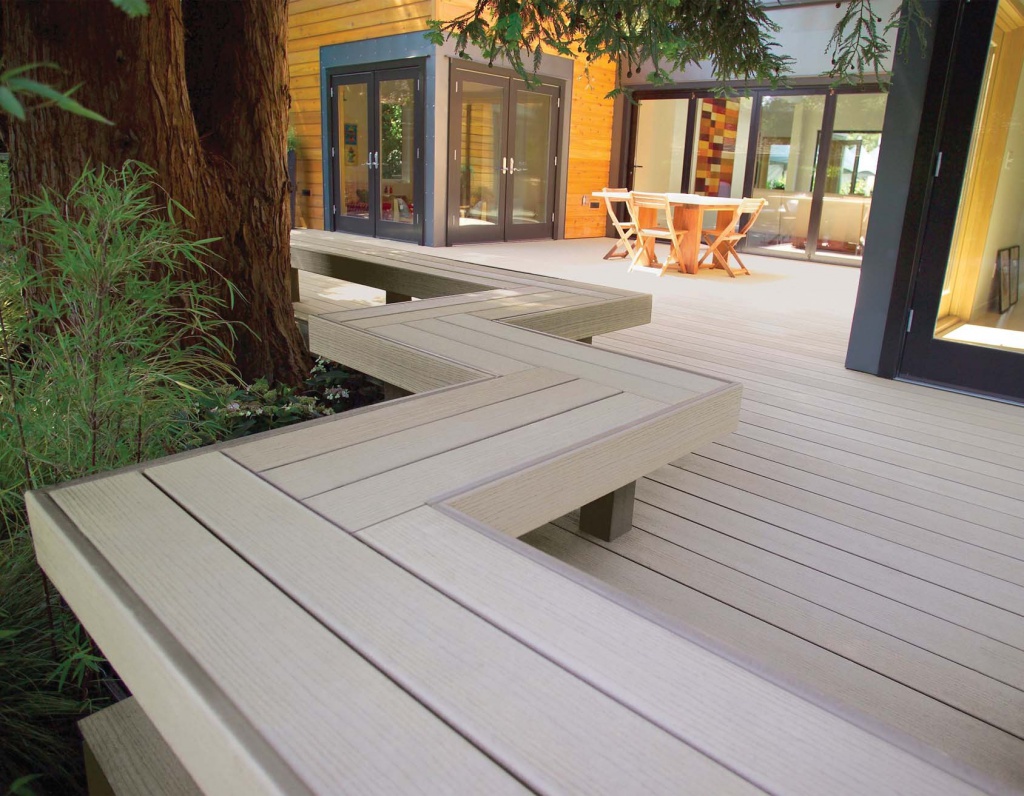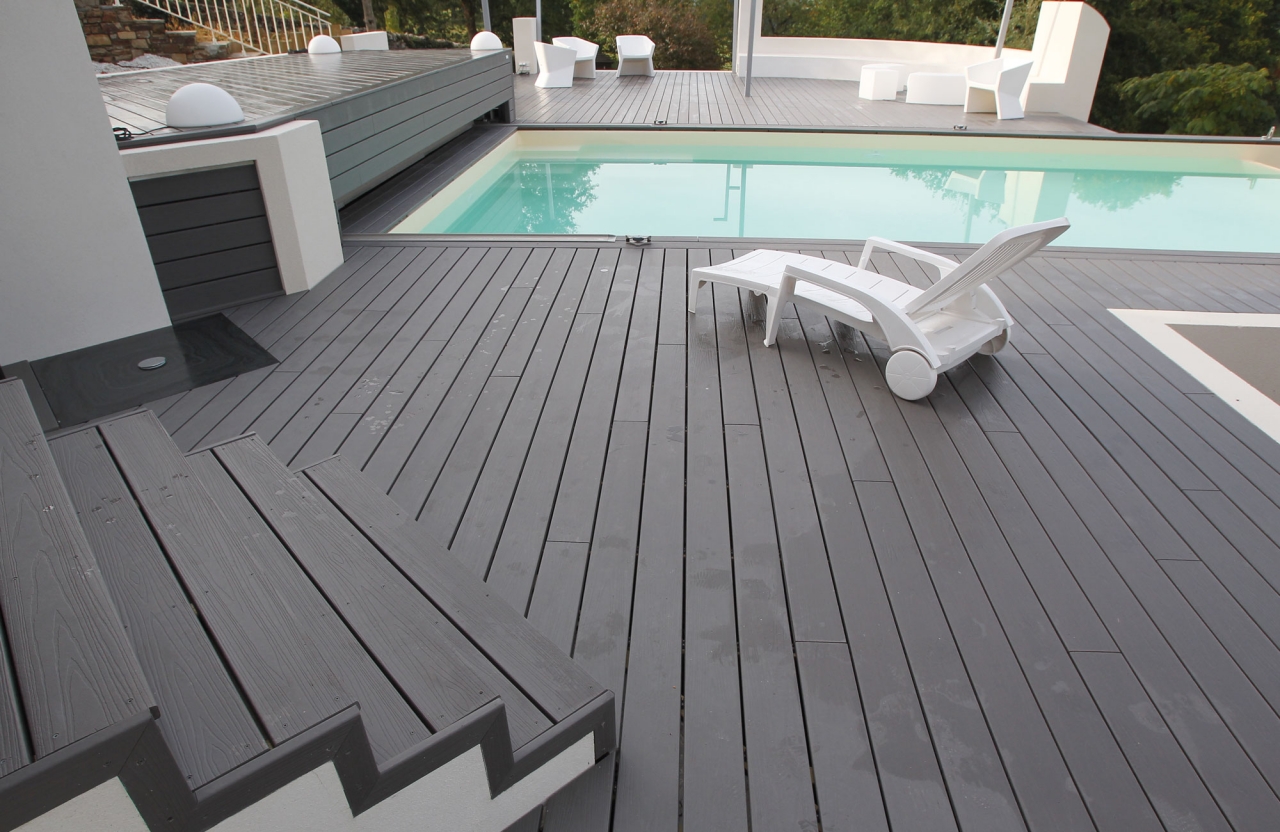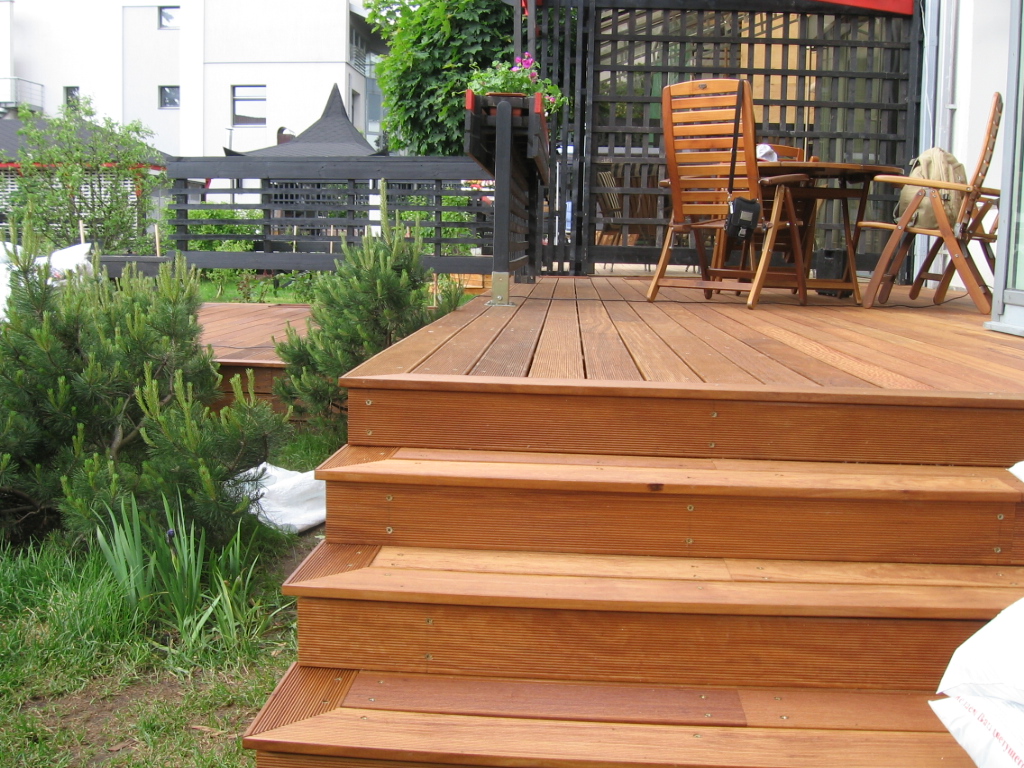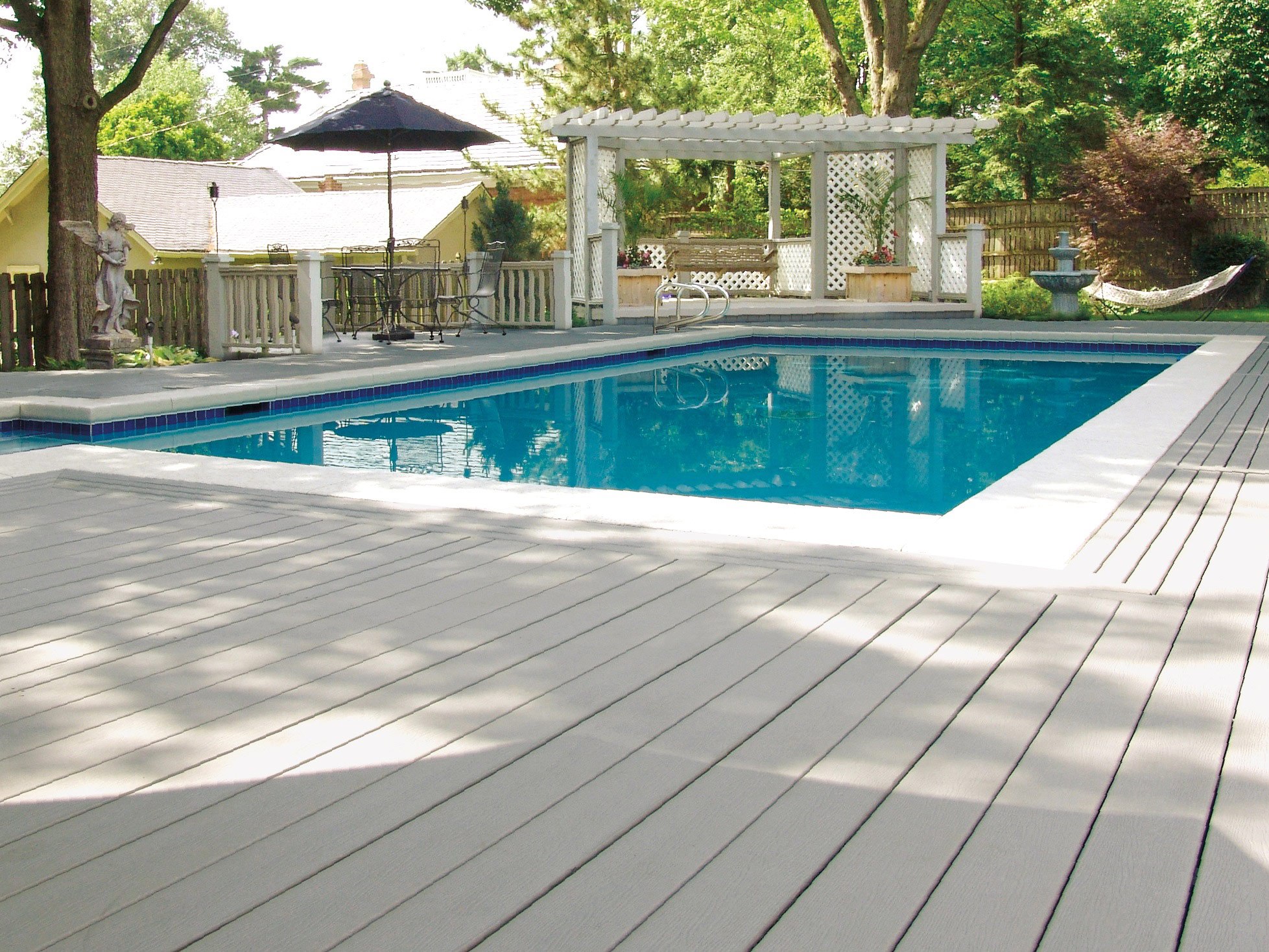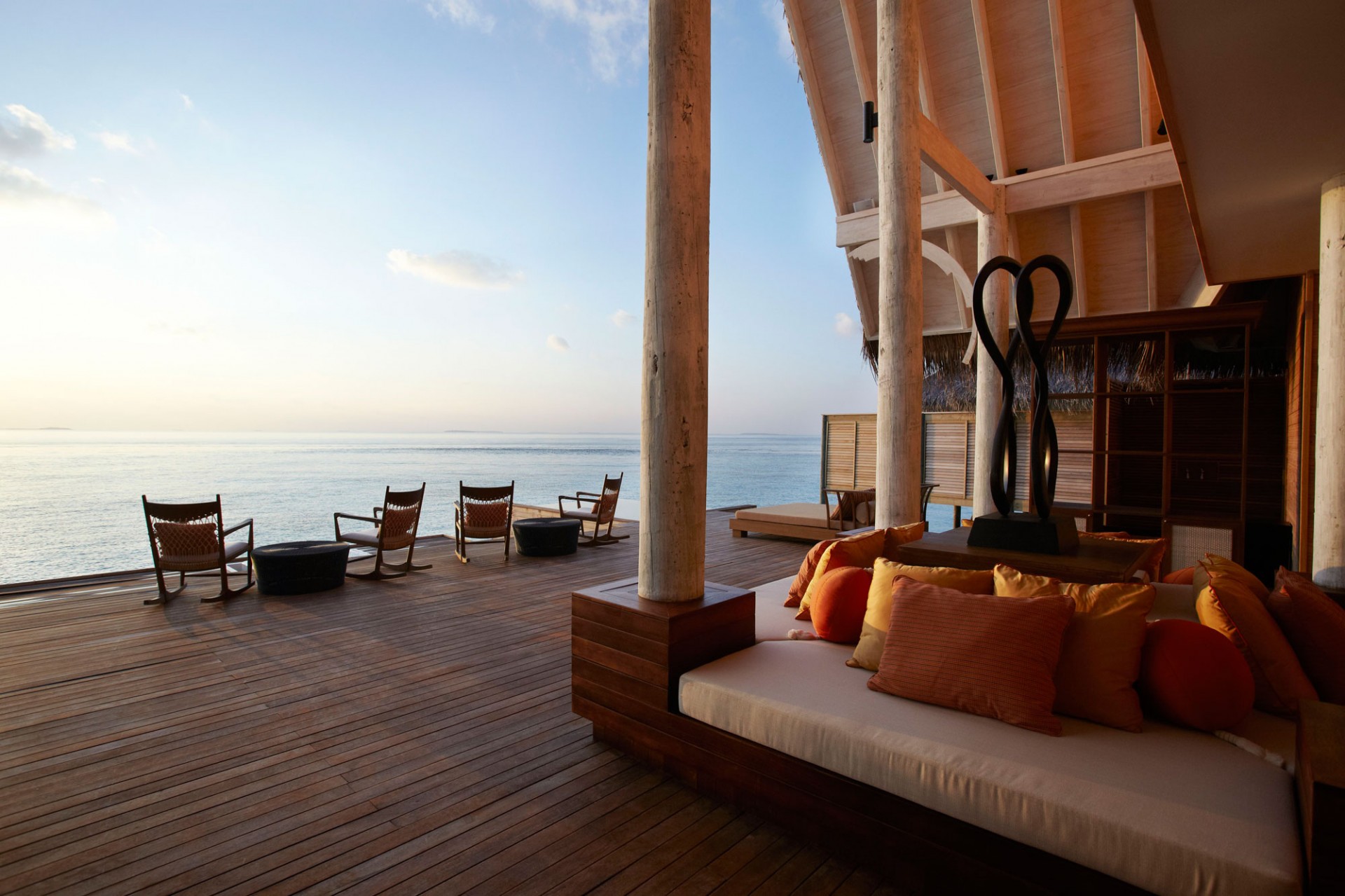Terrace board: features of choice
Content
Flooring, also known as decking, also called decking and decking, is primarily used outdoors. The scope of its application is quite wide:
- terraces, loggias, arbors;
- porch decoration, garden paths in the country;
- yacht decks;
- berths;
- moisture resistant indoor floors;
- covering of a balcony;
- fences and barriers.
What materials can a terrace board be made of?
Natural wood
This is a classic option, but it can turn out to be cheap only if affordable and inexpensive wood is used. In those cases when the terrace board is made from trees of rare varieties, the cost of the product, on the contrary, is very high.
On the territory of the Russian Federation, domestic enterprises produce terrace boards from pine, beech, oak, cedar, fir and terrace boards from larch.
On sale you can also find decking made from more exotic woody plants:
- acacia;
- rosewood;
- teak;
- merbau;
- sequoia;
- mahogany, etc.
The main advantages of the deck of wood materials:
- ecological cleanliness;
- beautiful texture;
- large selection of texture and color;
- flexibility, suppleness and elasticity.
Minuses:
- regular additional treatment with varnish or other protective coatings, including antiseptics, is required;
- in comparison with synthetic or semi-synthetic analogues, a shorter service life;
- affected by insect pests, mold and rot;
- low temporary stability of geometric dimensions due to the possibility of swelling and drying of wood;
- the ability to change the color of the coating with prolonged exposure to sunlight;
- heterogeneity of the coating (there may be areas with knots, cracks, resin inclusions);
- there is a risk of injury in the form of splinter.
Heat treated wood
It is obtained from wood billets treated at high pressure with steam at a temperature of 180-240 ° C. As a result, many of its characteristics change in such wood:
- humidity decreases;
- resinous substances and polysaccharides evaporate;
- resistance to temperature changes increases;
- moisture resistance increases;
- improved protection against rot, mold, various microorganisms and insects;
- increased dimensional stability;
- thermal insulation properties are improved.
Well, among the disadvantages that a heat-treated wooden terrace board has, one can name first of all its increased cost due to the complexity of manufacturing technology. In addition, there is a deterioration in such characteristics as elasticity, flexibility, and resistance to solar radiation.
Impregnated wood
To obtain this type of material, the wood is impregnated with special antiseptic solutions under pressure.As a result, the following characteristics are improved for a terrace board processed using this technology:
- strength;
- moisture resistance;
- fire resistance;
- resistance to rot, mold;
- ability to withstand the effects of microorganisms and insects;
- life time;
- resistance to solar radiation.
When using a terrace board of this kind as a floor board, especially indoors, it is necessary to know the composition of the impregnation material in order to find out how dangerous it is for humans and the environment. The fact is that in some cases, impregnated boards are obtained by impregnating natural wood with substances from an inexpensive price range containing arsenic and chromium compounds, copper or other harmful chemicals.
In addition, impregnated wood decking is quite expensive and may have a slightly concave shape that does not always disappear at the laid terrace deck. That in case if to lay such a floorboard, for example, on a loggia or indoors, will look the unsuccessful decision in an interior of any kind. The choice of a terrace board of this kind for the manufacture of steps, say, in a country house, is not suitable because of the visual effect that the concave surfaces of the flight of stairs may create.
Wood-polymer composite material (WPC)
It is made by mixing a variety of wood fillers with dyes and with polyvinyl chloride or propylene, or polyethylene.
Advantages:
- WPC deck board has a uniform color and a homogeneous structure that does not contain knots, cracks, pores;
- there are no areas of internal stress;
- a wide range of decorative designs (a board made of a polymer composite can be of any color, including it can be white or wood-like, for example, a wenge terrace board is in great demand among homeowners);
- WPC boards made using polyethylene are environmentally friendly and have a non-slip back side;
- WPC panels are often made hollow, so products of this kind are lightweight, making their installation easier;
- a composite deck board with voids and holes in the end part allows you to lay cables and wires in them without using any type of fasteners;
- at a deck board from KDP, higher, in comparison with the previously considered classes of similar products, operational characteristics;
- an artificial terrace board of this type has a service life even longer than that of a terrace board made of larch and pine;
- no need to think how to further process a board made of a polymer composite - it is already resistant to mold, fungi, insects and moisture;
- composite polymer terrace board is undemanding during maintenance.
Cons of WPC decking:
- their cost is higher than that of wooden boards, but it is justified by the absence of additional costs during operation and a longer service life, therefore it is the most suitable material, for example, in order to make steps from a terrace board or garden paths from a terrace board of this class in the country ;
- since the performance and environmental properties of the terrace board in question depend on what substances are included in the composite mixture, you need to start laying it (especially indoors) only knowing the composition of the ingredients of this building material;
- unlike wooden boards, such a terrace board, even white, heats up more strongly under the sun, and its dimensions also increase to a greater extent.
Features of terrace boards made using PVC binder
The PVC market is actively developing today. There are new technologies associated with the use of polyvinyl chloride.Many global companies involved in the production of products from KDP begin to switch to the use of PVC as a binder component of their product. What are the differences between a PVC decking board and similar products made of polyethylene (hereinafter referred to as PET) or polypropylene (hereinafter referred to as PP)?
- Fire resistance. PVC products have a flammability class, designated as "G2": they do not support combustion and do not give a flame. While PET / PP has a flammability class of “G4”. This means that they can catch fire even from an abandoned cigarette or coal falling from the barbecue.
- Heat resistance. PET and PP are more viscous substances, which reduces their strength, and the addition of special impurities to increase their heat resistance makes materials based on them environmentally less clean and reduces the service life of such products.
- Moisture absorption. A PVC-based plastic deck board contains less wood, and therefore absorbs less moisture. It is more suitable for urban street use, for example, for decorating a balcony (especially white), and for summer cottage use, where the device of the fence from this type of terrace board will be very appropriate. The fence from the PVC decking, unlike a similar design based on PET and PP, will retain its original appearance and strength longer.
- UV resistant. UV resistance of a PVC-based terrace board is about 1600 hours, while for PET and PP (without chemical additives) it is much less.
- High wear resistance and durability. PET, like PP, at a temperature above 50 ° C lose their strength, so the boards with their inclusion are made more massive.
- PVC is resistant to decay and can be used for 50 years or more, far surpassing its competitors in these characteristics.
- Changing the geometric dimensions of PVC boards during heating is almost five times less than that of PET or PP decking.
There is also a deck board made of pure polyvinyl chloride in the following color:
- brown;
- white
- green
- gray;
- beige.
Its physical properties and technical characteristics are no different from those widely used in the construction of PVC panels.
In addition, the seamless and seamless terrace board made of pure PVC with a relief profile on both sides is also quite popular to prevent slipping.
Can I paint a WPC deck board?
Although it is theoretically possible to paint decking from a WPC, it is not recommended to do this:
- in most cases, manufacturers directly say that their product does not need painting;
- In the accompanying documentation, as a rule, it is indicated that the board painted by the buyer cannot be returned and exchanged even under warranty.
Larch decking: fixing methods and how to paint?
Nowadays, people tend to use natural raw materials in their homes, on the balconies of apartments and in summer cottages. At the same time, larch decking is especially popular. Below are two main issues that most often concern home masters.
How is the installation of a terrace board made of larch?
Today on the Internet you can find many descriptions of how to lay a terrace board from larch, how to fix individual panels, with consideration of various ways of fastening. You can find the appropriate videos explaining how to correctly calculate the required amount of building material and how to choose a terrace board, with which coating you can provide it with the desired fire resistance class and resistance to various external negative influences.
In general, the process of mounting a terrace board is quite complicated and involves several stages:
- preparation of material;
- tool selection;
- leveling the base;
- soil compaction;
- backfill of rubble / gravel and sand;
- reinforced mesh laying;
- concrete foundation construction;
- lag setting;
- impregnation of wooden beams with an antiseptic.
And only after all the above works have been completed, you can proceed directly to the installation of the floor from the terrace board, which, in turn, can be carried out in an open or closed way. Given the need to ensure high quality and reliability of the created coating, it is best if an experienced specialist of high class does this.
What coloring materials can I use?
Answering the question of how to process a terrace board, we can say that the use of oils and oil paints is the most environmentally friendly, most suitable option for processing wood. Moreover, the best result is achieved when using woodworking products, choosing them from those that are made from oil:
- nutty;
- flaxseed;
- soybean;
- rapeseed.
Thus, a terrace board is a material ideal for creating flooring in the area of moorings and piers, for building fences and garden paths, decorating balconies, constructing walls and floors of verandas, terraces and arbors.
